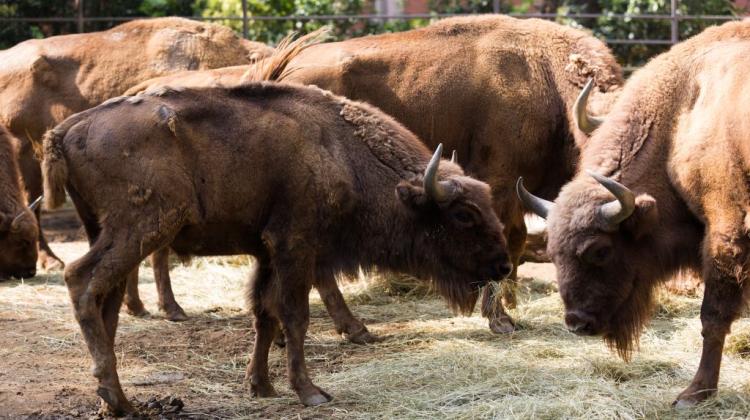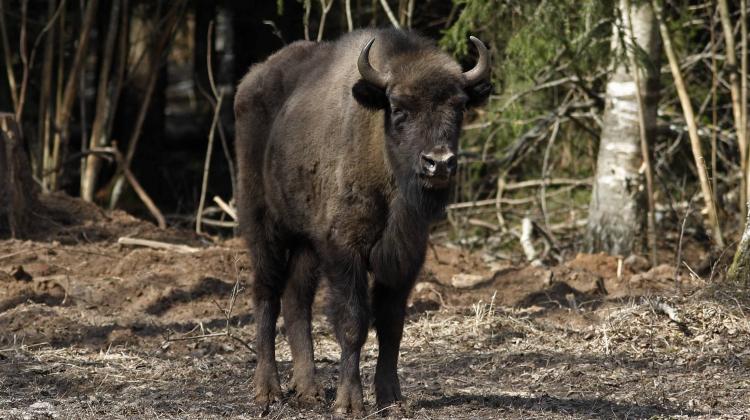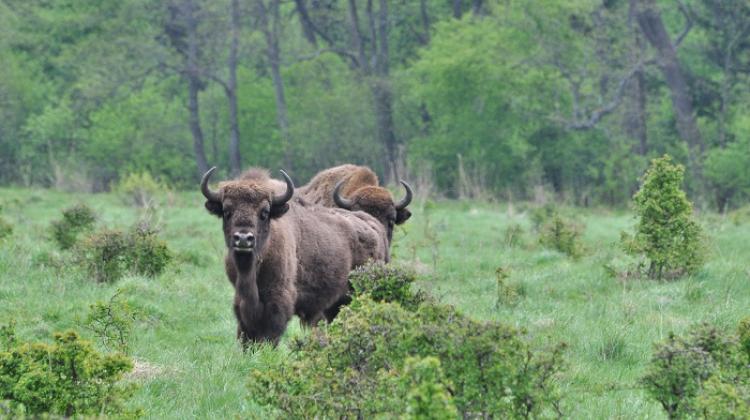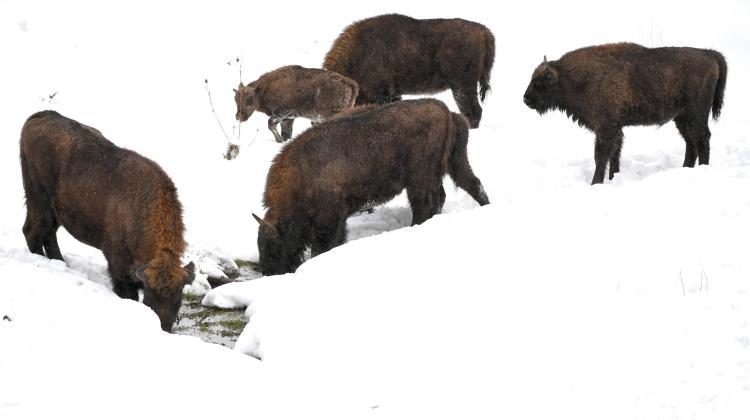Bieszczady bison descend from the mountains to the valleys, where they spend winter
 Photo: Fotolia / Iakov Filimonov
Photo: Fotolia / Iakov Filimonov
Due to low temperatures over the last few days, European bison living in Bieszczady started to come down from the higher parts of the mountains to the valleys, where they will spend the winter - told PAP the spokesman of the Regional Directorate of State Forests in Krosno Edward Marszałek.
"It is natural for bison to look for more friendly sites in the autumn, and the temperatures below zero in the last nights caused them to slowly move from the higher parts of the mountains, where they live in the summer, to the winter refuges in the valleys. The migration will take a few weeks. One of wintering grounds is the San valley" - said Marszałek.
Foresters are already prepared for winter feeding of bison. They have stocked many tons of feed, including hay, carrots, beets and corn. However, animals do not use the feeders yet. "We always start feeding when the snow prevents bison from finding natural food, at the moment it is not yet necessary" - he added.
Feed stocked for the winter is only supplementary for bison, which - like other animals - prefer to acquire food in a natural way. "Like bears, they love beechnuts, blackberries and stems of trees" - he said.
The first bison were brought to the Bieszczady Mountains in 1963, after more than two centuries of absence. They are of Lowland-Caucasian race. They are descendants of bison from the Caucasus and females living in commercial and private zoos.
Before the outbreak of the First World War, Bialowieża herd numbered more than 700 animals. As a result of the war and poaching, it was eradicated by 1919.
Also destroyed was the Caucasian population of bison; last animals died in 1925. By then, there were only 66 bison in the world, in zoos and on farms. In Poland, there were six animals - princely husbandry in Pszczyna and Poznań Zoo.
On the initiative of the International Society for the Protection of Bison, attempts were made to rescue the species in Poland, as a result there were 40 animals in 1939. After the war, the process began of reintroduction of bison in the wild in the Bialowieża Forest, initiating the formation of the herd living in the wild.
Bisons from the crosses of Caucasian and Bialowieża lines have been isolated. Currently, they live only in the Bieszczady Mountains. Bison in all other places in Poland are from pure Białowieża line.
According to estimates of the Krosno Regional Directorate of State Forests, 277 European bison live in the wild in the Bieszczady Mountains. (PAP)
kyc/ laz/
tr. RL
Przed dodaniem komentarza prosimy o zapoznanie z Regulaminem forum serwisu Nauka w Polsce.


















